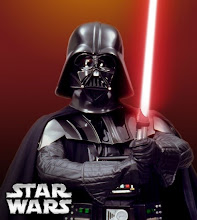The history of home consoles... how could I refuse?
It was kicked off in 1972 by the Magnavox Odyssey. It was the world's first home console, and even though it didn't do very good, it still encouraged others to make consoles. Nolan Bushnell founded Atari and soon made Pong, a legend today. In 1976, the Fairchild VES was released. It was the first console where the games weren't just "inside" the system; you had to buy them seperately. This made Atari start making the 2600, or VCS. It outsold the Fairchild soon. In 1979, some Atari employees broke away from the company to form Activision, which was the first third party game company. Mattel's Intellivision was tough competition for Atari, but it kicked Mattel's butts. Then, the game crash in 1983 occured. After that, Nintendo, an arcade games only company, made their first console, the Famicom, aka NES. Super Mario Bros. came out for it, and side-scrolling games became popular. It soon went on to become the best selling game of all time. Some harsh competition came from Sega's Master System, and even though it was successful, it couldn't beat Nintendo. In 1987, the NEC TurboGrafx 16 was released, the first 16 bit console. But Sega and Nintendo's bitter rivalry, known as the Console Wars, knocked NEC out of the market, due to the popularity of the two companies. Franchises, like Mortal Kombat and Sonic the Hedgehog, were popular on Sega's consoles. Sonic was an offer for a cooler mascot than Mario. The Game Boy was released in 1989, and Nintendo entered the handheld market. In 1993, PCs were becoming powerful enough to be game consoles. But in 1994, Nintendo and Sega were threatened by the newcomer: The PlayStation. Sony had stolen the game console market from Sega and Nintendo. Nintendo's N64 still used cartridges, which seemed "old" and out of style, and discs were becoming the primary storage method for game consoles. The N64 was the last console to use cartridges. Atari's Jaguar, released in 1993, was supposedly the first 64-bit console, but it wasn't popular and turned out to be Atari's last console. In 1998, the Sega Dreamcast was released, starting the 128-bit era. But Sega couldn't beat the PlayStation 2. Most [normal] people would rather have a PlayStation than a Sega console. The little console sold just enough units to stay in the market, but that changed when the Xbox and GameCube were released. It was too much for Sega , and they discontinued it later that year. The Dreamcast was Sega's last console. The Xbox, made by Microsoft, a major computer company, was their first console. A notable launch title was Halo: Combat Evolved, which was considered the "killer app" for the console. It was impressive with great graphics, sound, and controls. Later that year, Nintendo released the GameCube. It wasn't as successful as the Xbox or PS2, but it was powerful, compact, and played Game Boy games, which were popular at the time. The DS and PSP were released in 2004, starting a new era. It's just called "generation seven." What happened to 1, 2, 3, 4, 5, and 6? Oh well. Then, in 2005, the Xbox 360 was released, making it the first generation seven console. Then, in 2006, the PS3 came out, followed by the Wii. The Wii is beating both in sales, so Nintendo must be pretty happy up there in their diamond tower.
Well, that's the history of game consoles. Next up, see A Salute to Atari: Part I: Pong! Now you go bye bye goo goo ga ga--zip.
Games!
Hey! You! Yeah, you! If you're a real gamer, scroll down to the bottom of this page, then play until your eyes bleed and all your fingers ache! :-)
Subscribe to:
Post Comments (Atom)

No comments:
Post a Comment